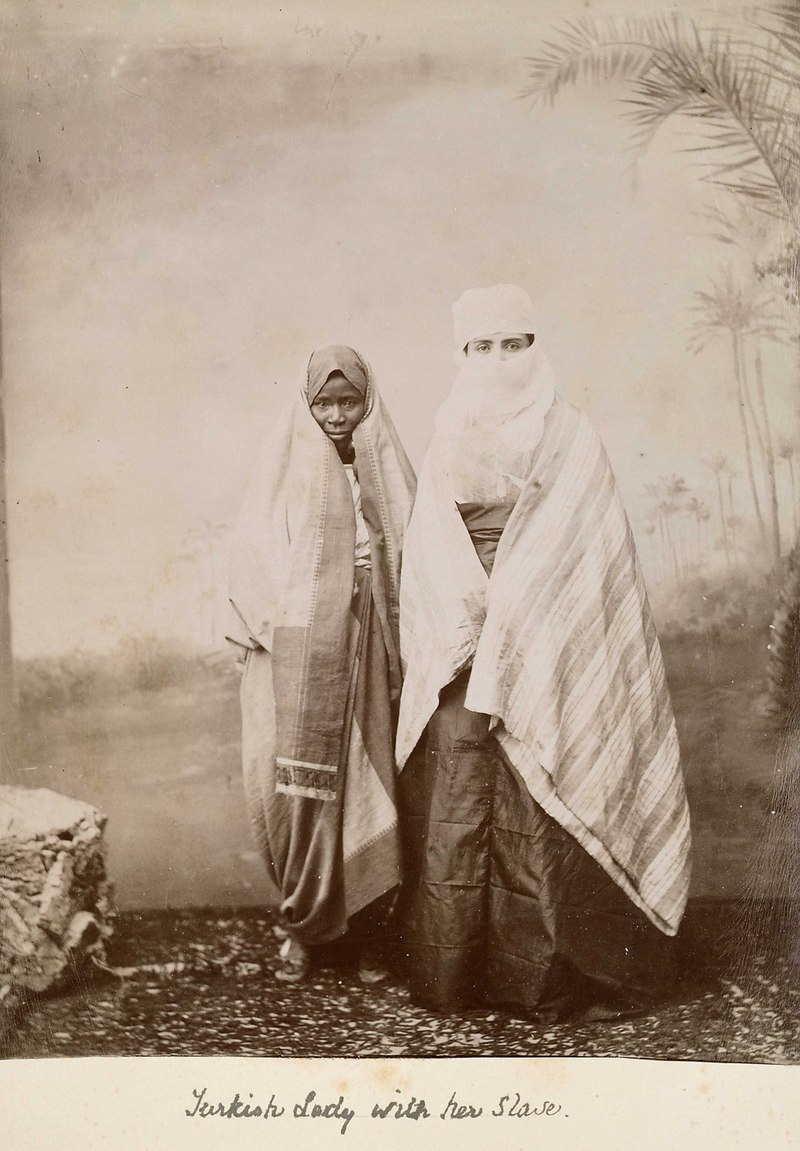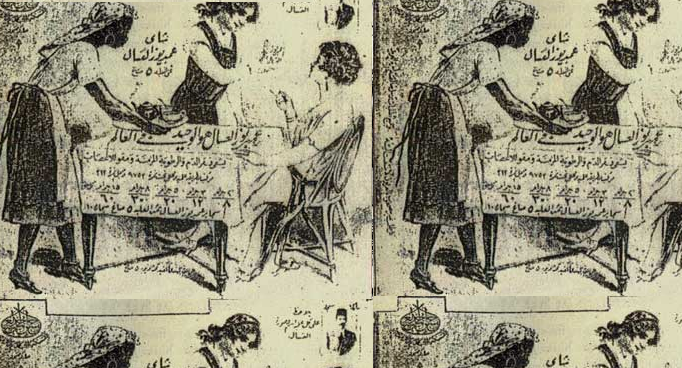Some black Americans and others have duped themselves strongly into believing Islam is some sort of ‘anti-racist’ sect. The enemy also pushes Islam as some broad tent of racial equality before ‘God’ where all of the atrocities of the western world are simply absent.
Stories like that of Bilal, the Ethiopian slave and first muezzin, are skewed into some idea of so-called Muhammad being a freer of slaves and campaigner against racism, even though many hadith have Muhammad insulting Bilal as a ‘raisin head’, among other things.
Bilal was not obtained at war either – he was BOUGHT by Abu Bakr and given to Muhammad. Muhammad was never a particular ‘freer of slaves’ in the first place.
Islamic biographies of Muhammad by experts affirm this to be the truth:
Muhammad had many male and female slaves. He used to buy and sell them, but he purchased more slaves then he sold. He once sold one black slave for two. His purchases of slaves were more than he sold.
Zad al-Ma’ad, Ibn Qayyim al-Jawziyya
In reality, Africans were captured by merchants in the most brutal manners.
Any entrenchment of serfdom was often rejected by Muslims after the Abbasid experiment with making Muslims domesticated slaves failed. Therefore, slavery became a preoccupation to keep any Islamic empire running.
Al-Tabari, in the 800s AD, mentions the industrial slavery of blacks in Baghdad, Basrah and other cities on the Euphrates and Tigris rivers as pearl fishing slaves, slaves on gigantic plantations and others threw off their shackles and turned on their masters.
Eventually, a revolt known as the ‘Zanj Revolt’ occurred, one of the biggest threats to any Islamic empire that ever existed.
The rebels were so numerous that the Arab sources indicate two million revolted against the Arabs, burning plantations and killing Arabs indiscriminately. 300,000 inhabitants of Basrah alone lost their lives. Oddly enough, this incident of a Haiti straight in the heartland of the Caliphate is relatively unknown.
You see, the historical reality of Muslims enslaving black people is not amenable to the multicultural project. That’s why this discussion gets no airtime compared with transatlantic slavery, which is even drilled into the heads of white people in countries like Estonia that had nothing to do with it.
Our enlightened ‘modern’ historians don’t just deny this incident but try to cover it up and pretend it was ‘just’ some local Mesopotamian tribesmen revolting, in total contradiction of the Arab sources and their eye-witness accounts, based on NOTHING.
After the revolt, the rebels (estimated to be at least a million people) were all put to death and business continued as usual. Date plantations in Arabia required larger amounts of black labor, numbering in the hundreds of thousands on a single plantation at any point. Clove, coconut and sugar plantations required similar amounts of labor. Zeilah and Tadjourah functioned as major slave ports in the Red Sea. By the 10th century, a man from Java presented a Chinese emperor with black slaves.
Mecca itself functioned as a gigantic slave market and depot for a millennium and a half, mostly dealing in black slaves for export from Africa.
There were still copious amounts of black slaves being sold when Malcolm X made his infamous visit to Mecca and Medina, proclaiming his belief that Islam is racially equitable.
A documentary of a visitor to Mecca in 1964 even shows this to be true!
90% of enslaved Africans did not survive the journey to any Middle Eastern destination. Sick Africans in slave-trains had their arteries cut and were left to die, strewn like luggage on the side of the road, to the point where travellers frequently saw such roads laced with skeletons for hundreds of years. No doubt this was also a form of sacrifice.
African slaves worked naked in the baking sun as common Islamic ‘belief’ claimed black people did not need any protection from it. Many slaves were simply castrated brutally (often enroute to Islamic lands) and some female slaves in Somalia and Zanibzar had their genitals branded off with irons.
This was the case with Tippu Tip’s slaves, who was one of the instigators of the Congo Free State project.
Tidiane N’Diaye argued that there is little trace of black slaves left in the land of Islam due to widespread castration, ill-treatment, race-mixing and high mortality, while pointing out that the respective descendants of slavery number about 70 million on the American continent.
The African continent has been bled of its human resources in every possible way. Through the Sahara, through the Red Sea, from the ports of the Indian Ocean and via the Atlantic, a millennium of slavery (ninth to nineteenth) exported four million slaves via the Red Sea, another four million via the Red Sea ports of the Swahili from the Indian Ocean, perhaps up to nine million along the trans-Saharan caravan route, and eleven to twenty million (depending on the source) across the Atlantic Ocean.
The Diplomatic World, Elikia M’Bokolo
Slave economies such as Zanzibar, Oman and the Somalian states thrived off of the sale and subjugation of Bantu peoples. In West Africa, Moroccans, Mauretanians and Hausa people grew very wealthy from the transport of slaves whose route through the Sahara was brutal. Both Islamic Spain and the Ottoman Empire also generated much wealth and power from the transport of Africans.
Complex systems of identification developed in Somalia, where black slaves were referred to as jareer and their ‘negroid’ features were used to construe them as ‘socially inferior’. Jareer exclusively worked on plantations and were segregated. Any social contact was forbidden, including even speaking to them. Some Somali groups sowed up the vulvas of their black slaves through infibulation to prevent them giving birth.
In both Fatimid and Ayyubid Egypt and Al-Andalus, among many other Islamic states, one major pattern was to abduct white, black and Turk (at this point meaning Asian) slaves into separate armed forces that could be played off against one another at any point.
These tri-racial or bi-racial armies are a major vocal point of any civilization under Islam. Racial instincts were preyed on carefully to entrench the power of any Muslim rulers. The Ottomans also used this model with their overseers of the harems, the eunuchs.
Coptic xian monasteries had specialized centers of castration where they cut the genitals of black boys for export to the Ottoman Empire. Slavery of blacks was not a meager phenomenon in the Ottoman Empire, either. Black people were commonly used as household slaves and had many other ‘uses’.

We only have to see the attitude towards blacks from the Islamic philosophers:
The negro nations, are, as a rule, submissive to slavery. They… have attributes that are quite similar to those of animals.
Muqiddimah, Ibn Khaldun
[Blacks are] people who are by their very nature slaves.
Ibn Sina
This excerpt shows how little changed for Africans under Islam for a millennium:
The route from the interior of Africa through Lake Tanganyika to the coast was littered with skeletons as a result of slaves dying from exhaustion, hunger or the brutality of their couriers, sometimes still yoked together. Deaths during the journeys were so numerous that it has been estimated that for every slave who reached the coast in Zanzibar four or five lives were lost in transit. An Arab slave dealer, by name Syeb-bin-Habib, is reported in 1882 to have admitted that out of 300 slaves he acquired from the interior, only 50 reached the coast alive. David Livingstone observed that if the slaughter committed during the raids is taken into account in addition to the deaths along the routes, then the price of every single slave who arrived at Zanzibar would be about ten lives.
[…]
As early as the ninth century, the Zanj, according to the great Arab historian al-Tabari, were employed in gangs of between 500 and 5000 in the salt marshes of southern Iraq. Al-Tabari observes that their condition was ‘extremely bad’ and that they were literally pinned down there, hopeless and homeless’. Their reward consisted of ‘a few handfuls of meal’. Their miserable condition led to several rebellions, the fiercest of which lasted for fifteen years from 868 to 883 CE.
A nineteenth-century eyewitness described the condition of slaves in the Persian Gulf regions as ‘a dreadful thing’; he went on to state that ‘perhaps the worst part of the whole thing is the pearl-diving’. The stronger male slaves were chosen for the task:
-
- And before they dive for the pearl oysters a clip is put on their nose to prevent their breathing. They then jump out of the boat, armed with a hammer and a light basket, and on coming to surface pass the oysters into the boat, and after a whiff of air are sent down again. If they don’t succeed in sending up a certain number of oysters they get severely beaten. Before long their lungs begin to give way, and then it is soon all over with them.
A twentieth-century eyewitness described the same situation as ‘a repulsive and dreadful thing. Men and women live on the level of animals. As little is spent on them as possible, they being regarded simply as pieces of equipment for pearl diving’. It has equally been pointed out that slaves in North Africa in general and Egypt in particular worked naked on starvation rations and in the unbearable climatic conditions, as a result of which they died by the hundreds, if not thousands.
Within tropical Africa itself, Muslim states and communities used slaves extensively in peasant and large-scale agricultural production. The condition of slaves throughout such Muslim communities was anything but mild. In 1820, Rene Callie reported numerous slave-based plantations in the Senegambian region where slaves lived in several small slave villages. Callié accompanied one of his Muslim hosts to his rice plantation and described the condition of the slave workers in the following words: ‘The poor slaves work entirely naked, exposed to the heat of the burning sun. The presence of the master intimidates them, and the fear of punishment expedites the work … the women, who had little clothing, had their children tied to their backs.’ Reporting on massive Maraka slave desertions during the late nineteenth/early twentieth centuries, one French administrator noted: ‘If the Maraka had treated their slaves with less stinginess in their food [ration] and with more humanity in their customary relations, then escapes would have been less frequent.’
In Zanzibar, it is well known that slaves who advanced in age or became ill, and were of no economic value, were left to fend for themselves, and most of them ended up destitute and starved to death. Some were brutally killed by their masters and their bodies thrown by the seaside.
The Legacy of Arab-Islam in Africa, John Alembililah-Azumah
Allah’s Messenger said: Allah created Adam when He had to create him and He struck his right shoulder and there emitted from it white offspring as if they were white ants. He struck his left shoulder and there emitted from it the black offspring as if they were charcoal. He then said from the right: For Paradise and I do not mind. Then He said to those from his left shoulder: They are for Hell and I do not mind.
Hadith Al-Tirmidhi, Muhammad al-Tirmidhi
The myth of an Islamic paradise for black people is nothing more than a total LIE.

